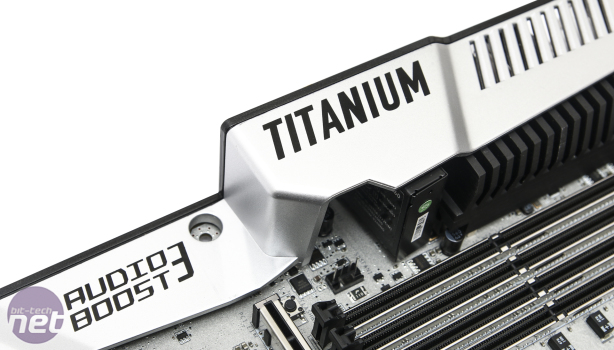
Performance Analysis
As this is the first board to go through our grinder using our updated test suite of two XFX R9 390X GPUs and Intel Core i7-6850K, we don't have any direct comparison numbers yet, but more boards are waiting in the wings. What we can say is that nothing we've seen yet overclocks any higher and all get roughly similar results, so we have confidence in the small number of new tests we're using too. At stock speed, MSI did suffer a small disadvantage due to the fact that on some Asus boards we've looked at, the turbo frequency was a few hundred megahertz higher. Once overclocked, though, this advantage fizzled out.
Click to enlarge
As we mentioned in our testing page, we now disable SpeedStep in X99 testing as this can have a huge impact on performance for very little increase in power consumption. This was most clearly seen in Unigine Valley, where the score rose by a massive 2,160 points from 3,937, to 6,097. We'd expect a sizable leap here given we're also using two high-end GPUs and standard settings, so the CPU should be the bottleneck and any overclocking would hopefully yield some big improvements. We did have some issues with CrossFire here, though, which would occasionally stop working half way through the benchmark, but after several clear runs we're happy with the results. Overclocking also saw some noticeable improvements in the other 3D tests too, although not as substantially.
There was nothing bad to report with the storage testing - the Titanium maxed out our speed M.2 Samsung 950 Pro SSD, with a read speed of 2,300MB/sec and it was a similar story with the SATA 6Gbps speeds too. There are no third party SATA controllers to worry about here either. One small fly in the ointment of an otherwise solid range of benchmark results was the audio performance. We initially saw numbers lower than 100dBA and -100dBA for the dynamic range and noise levels respectively which are low for what should be a standard Realtek ALC1150 codec with some nifty audio circuitry. We went back to the tests and reloaded the drivers and software and were met with slightly higher numbers. RightMark's Audio Analyzer can have some variation so we're not overly concerned here and the results are on par with what you'd expect from a cheap soundcard such as Asus' Xonar DGX 5.1.
Click to enlarge
Conclusion
The MSI X99A XPower Titanium is a fantastic-looking board that's also loaded with features and a worthy adversary to the likes of Asus' X99 Deluxe II, that we'll be looking at soon. There's little lacking here - and so you'd hope for over £300, and the only reason you might look elsewhere is for more extensive RGB lighting or of course for a cheaper way to own an X99 system. Even then, the Titanium includes a standard 4-pin port for third party LED strips, and the colour-neutral PCB will look fantaatic with whatever colour scheme you're PC is currently rocking.
There are, of course, cheaper options for potential X99 owners and the excess here is clear with the fancy PCB and other aesthetics so ultimately it will come down to your own needs as to whether these visual enhancements are required. At face value it doesn't offer amazing value, although with triple-spaced PCI-E slots for two-way GPU setups plus all the overclocking tools both air, water and LN2 enthusiasts would need, the Titanium is a fantastic motherboard for a high-end, overclocked system.
MSI X99A XPower Titanium


MSI MPG Velox 100R Chassis Review
October 14 2021 | 15:04










Want to comment? Please log in.